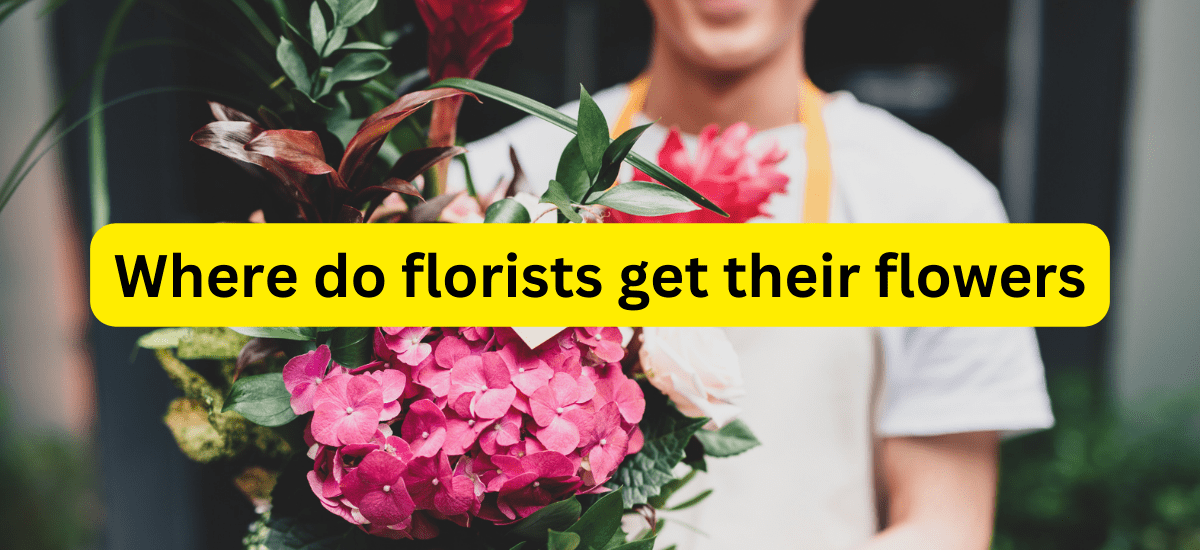Flowers are not just nature’s exquisite creations; they are an integral part of numerous life events, from birthdays to weddings and even somber occasions. The beauty and fragrance of flowers have the power to convey emotions and sentiments, making them an essential component of the world of floristry. But have you ever wondered where florists get those beautiful blooms that make their arrangements so captivating? In this article, we’ll take you behind the scenes to explore the sources of those vibrant and fragrant flowers.
The Role of Wholesalers
Wholesalers play a vital role in the flower supply chain. They act as intermediaries between flower producers and retailers, ensuring a consistent supply of fresh flowers. Florists often establish relationships with wholesalers to access a wide variety of flowers and to maintain the freshness and quality of their offerings.
Local Flower Farms
Many florists prefer to source their flowers locally. This not only supports local growers but also ensures the freshness of the blooms. Local flower farms are a treasure trove of seasonal flowers, providing a unique touch to floral arrangements.
Online Flower Markets
In the digital age, online flower markets have become a convenient source for florists. These platforms allow florists to browse and purchase a wide range of flowers with just a few clicks. Online flower markets offer an array of options, making it easier for florists to cater to specific customer preferences.
Auction Houses
Auction houses are a less conventional but intriguing source of flowers for florists. Here, they can bid on batches of flowers, sometimes acquiring unique and rare specimens. The competitive nature of auctions can be both exciting and challenging for florists.
Importers and Distributors
Many exotic and out-of-season flowers find their way to florists through importers and distributors. These entities source flowers from international markets and make them available to florists worldwide, enabling the creation of distinctive floral arrangements.
Sustainability in Sourcing
As environmental concerns continue to grow, florists are increasingly turning to sustainable sourcing practices. They seek out eco-friendly flower suppliers who prioritize organic and fair-trade principles, ensuring that the beauty of their creations doesn’t come at the expense of the planet.
Quality Control
Maintaining the quality of flowers is paramount for florists. They carefully inspect and select each bloom to ensure it meets their standards. This attention to detail is what sets a professional florist’s work apart.
Challenges in Flower Sourcing
Sourcing flowers can sometimes be a complex task. Florists must contend with issues like seasonal availability, changing weather conditions, and market fluctuations. These challenges can test their creativity and resourcefulness.
Florists’ Personal Gardens
Some florists maintain their personal gardens, where they grow a selection of flowers. These homegrown blooms add a personal touch to their arrangements and offer a unique selling point.
The Art of Flower Selection
Choosing the right flowers for an occasion is an art. Florists use their expertise and creativity to select the perfect combination of colors, shapes, and scents to convey the intended message.
Floral Industry Trends
Like any other industry, the floral business evolves with time. Florists keep an eye on emerging trends to stay relevant and offer customers the latest and most fashionable floral designs.
The Importance of Seasonality
Seasonality plays a significant role in flower selection. Florists often emphasize the use of seasonal blooms to ensure freshness and affordability.
Building Relationships
Florists often build strong relationships with their suppliers. Trust and reliability are crucial in the floral business, and these bonds ensure a continuous supply of quality flowers.
Conclusion
In conclusion, the beauty of a florist’s work is not just in the art of arranging flowers but also in the sourcing of these exquisite blooms. Florists rely on a diverse network of sources, from wholesalers and local farms to online markets and even their personal gardens. The choice of sourcing depends on factors like seasonality, quality, and personal preferences.
And as you embark on your journey to understand the floral world better, don’t forget to appreciate the hard work and passion that florists invest in bringing you those stunning bouquets and arrangements.
FAQs
1. Are all flowers used by florists grown locally?
Not necessarily. While many florists prefer local sourcing, some rely on international distributors for exotic blooms.
2. How do florists ensure the freshness of their flowers?
Florists carefully inspect and select each bloom and maintain close relationships with their suppliers to ensure freshness.
3. What are some sustainable practices in flower sourcing?
Sustainable florists opt for organic and fair-trade flowers, ensuring minimal environmental impact and fair treatment of workers.
4. How do florists keep up with changing floral trends?
Florists stay updated on industry trends through training, workshops, and industry publications.
5. Why is seasonality important in floral arrangements?
Seasonal flowers are not only fresher but also more cost-effective, making them a preferred choice for many florists.

